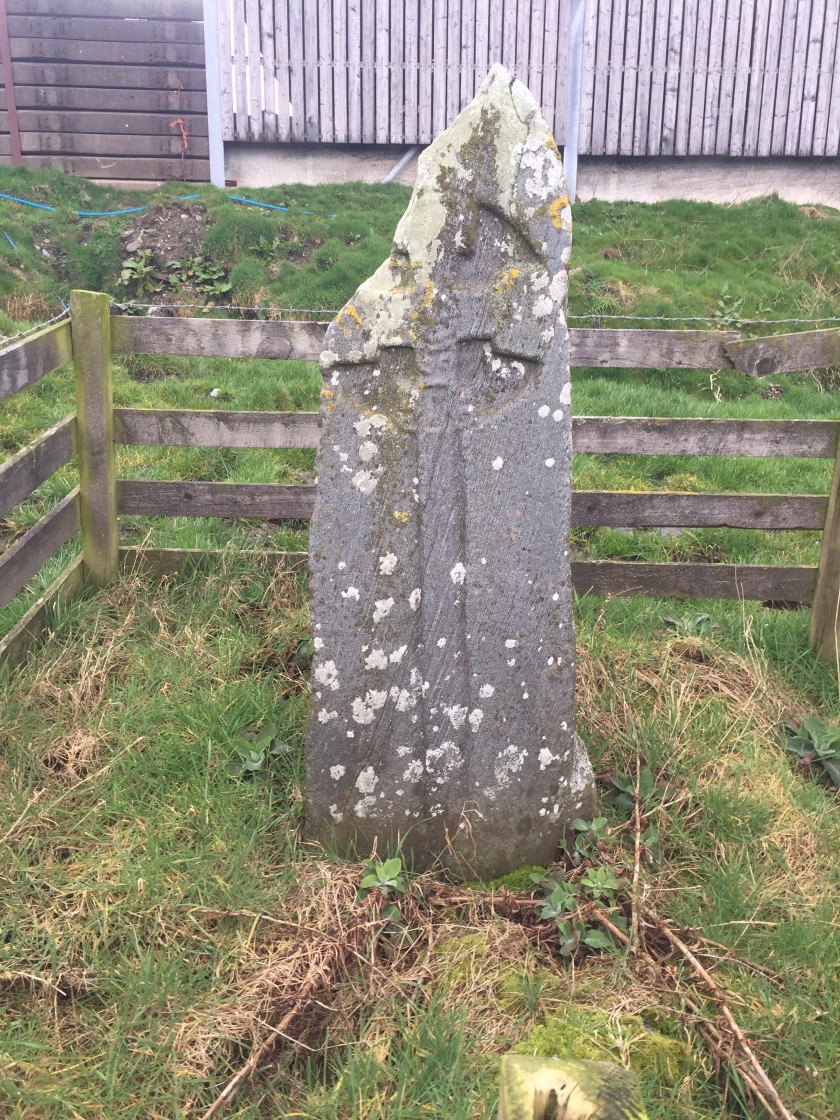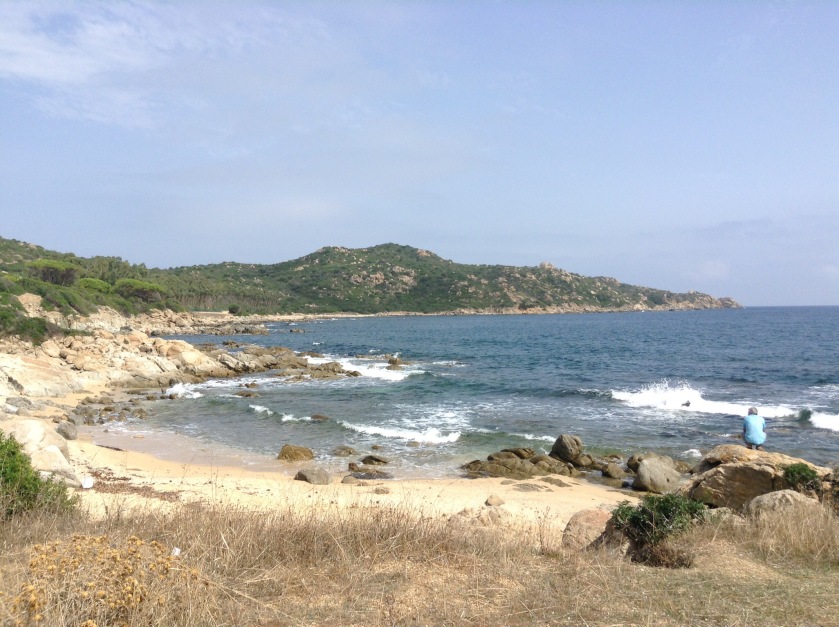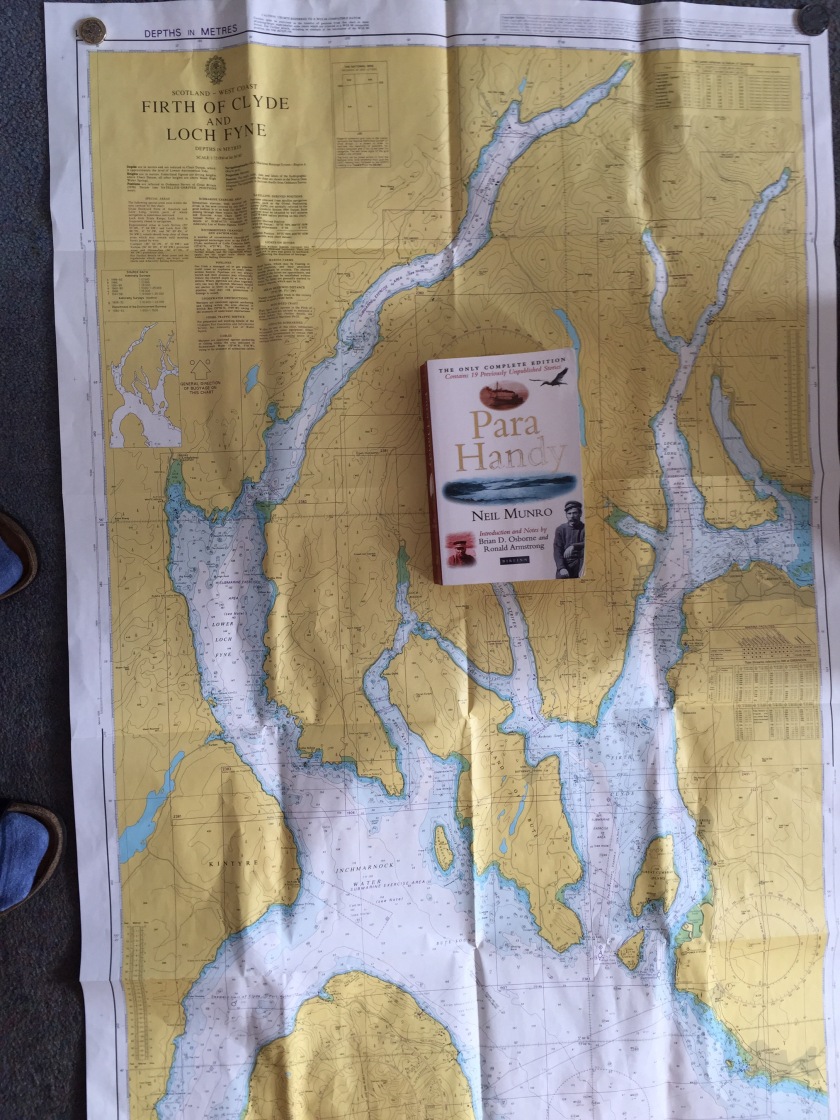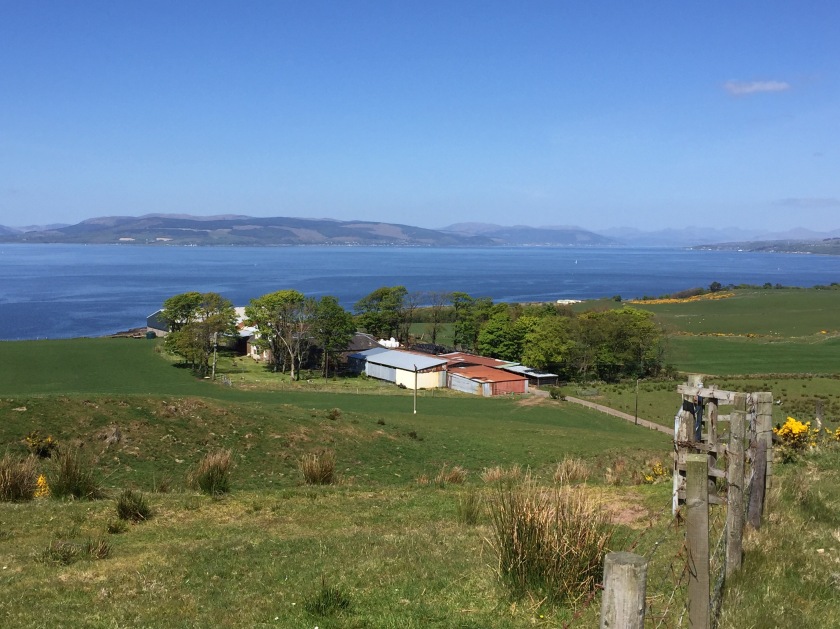I was planning to do this the following week. Luckily there were seats on the train and accommodation available this week . Quickly booked my train ticket and bunk in a hostel. Off the next day, why wait. The plan was to take the bike and train then stay in a hostel. One less car on the busy roads, see more on the bike, miss the high season hotel prices , besides you can’t really take you car to Lismore. A place to visit that had been on my agenda since last year.
Taking early out in then changing in Glasgow to the first train to Oban to arrive in time for lunch. The route of the train runs westward along the Clyde then rises into to the hills and continues like this until it reaches the sea at Loch Etive. Taking this route you really appreciate that we live in a temperate rain Forrest or more truly the remains of one. On arrival in Oban I immediately had lunch, a superb sandwich of local caught prawns and an indifferent coffee from the seafood stall on the pier.
After eating, I left my bag at backpackers hostel and went to enjoy the afternoon. As Oban is busy, bustling town of tourists and little interest. So I went for a relaxing walk on the small island opposite called Kerrara. It was pleasant walk in the sunshine with views southward. The small cafe at southern end served a good cup of tea together with notable scones. I wasn’t alone in thinking that it was a good way to avoid spending time in Oban.
First castle of the trip

Castle Gylen, a fairly recent example of a Tower House dating from the late sixteenth century but didn’t have much life. The Covenanters fired it 1647. Possibly built on the site of an earlier castle or fort given the location.
Back at the hostel, they gave me my room key and bunk number.One of eight in the room, hadn’t been in place like this since my teens. More sociable and interesting than many expensive hotels but the showers were basic. You had to get up early for some privacy. Slept well.Eating out in the evening wasn’t a problem. At one time you greeted everyone in the barrack, togetherness was the thing. But these guys were glued to thier mobiles.
The ferry to Lismore left at nine which meant an early start, in the rain of course. It was a hours sailing to Ardnacroish, the port for the island. Once there I hit the road on the bike. You couldn’t get lost as there is only one road which runs the length of the narrow island. Still damp with low cloud but beautifully quiet, an ancient island. Rugged and uneven but very fertile. Thoroughly enjoying cycling on the up and down roads to my hearts content. Greeting , saying hello to cattle and sheep, watching the wildlife, seeing again famliar waters and mountains. Brings joy to the heart. Eventually I found the path to Castle Coeffi, a ruin on the islands west side. I never reached it as I took a wrong turn.
First castle of the day, Castle Coeffin
 Thought to be named after Gaelic-Norse prince, built on the site of an earlier fort. Other than it was part of Clan MacDougall’s defence system, little is known about this place. The site has a fish trap and is typical of a sea castle. Built on a promintary for defence and look out,with a sheltered beach with good landing for their boats and surrounded by productive farmland for food. All the qualities required for a tribe of raiders.
Thought to be named after Gaelic-Norse prince, built on the site of an earlier fort. Other than it was part of Clan MacDougall’s defence system, little is known about this place. The site has a fish trap and is typical of a sea castle. Built on a promintary for defence and look out,with a sheltered beach with good landing for their boats and surrounded by productive farmland for food. All the qualities required for a tribe of raiders.
Next up was lunch at the island’s only cafe, the visitor centre. The soup was good, the place was busy. The only other place to eat was the bunk house’s restaurant but that was miles away. Low impact tourism appears to be the preferred option for the island, holiday houses are common. Agriculture is important as there are many good sized farms which is encouraging.
Back on the bike heading down to the south end. Thinking I’ll have plenty of time but not appreciation that two and half miles are tough on these roads. That, the final part of the track to Achinduin Castle had to be taken on foot. I never reached it only seeing it from a distance. For such a little island it is a very large place.
All that remains of Achinduin Castle on a rainy day.
Like the other one, there isn’t much known about it. Dating from the thirteenth century, Tradition has it that it was the Bishop’s castle. Probably part of the MacDougall’s empire. Something dark about it.
The return ride was in good time and left me with some time in hand for the ferry and back to Oban and smoked salmon sandwich.
Ate in a different place that evening but returned to same old pub for a pint. Slept like a log.
Thursday off quickly after breakfast, in the rain. Somehow my jacket disappeared in the hostel. Still got my Leica and wallet. Took the cycle path northward out of town. This was rather a dull route which led to picturesque housing estate. Which led unusually to the final castle of the trip.
Dunstaffinage Castle, history for the tourists. Promise this is last castle.
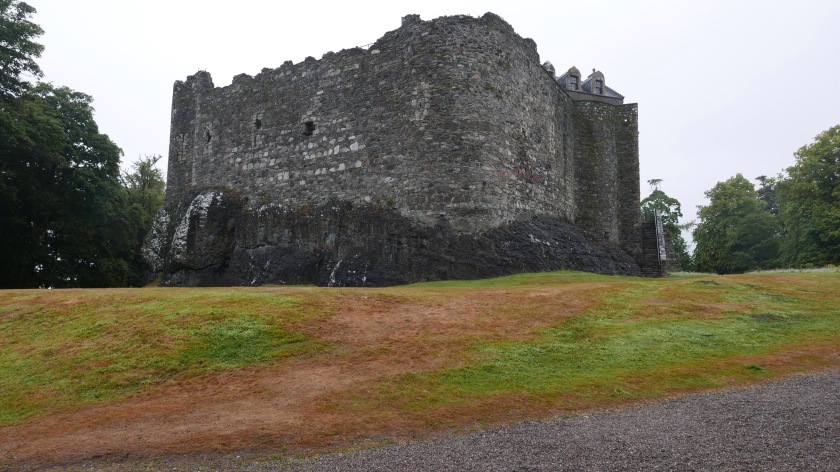 Dunstaffinage Castle. At seaward end of Loch Etive.
Dunstaffinage Castle. At seaward end of Loch Etive.
This is all that remains of a more complex castle. Originally it must have been similar to the two castles on Lismore all built around the mid thirteenth century by the MacDougalls. When they reached an accord with the Scottish King it became more important and enlarged. Robert the Bruce, the renown Anglo Norman adventurer captured it and it became a Royal Castle, the MacDougalls returned to be part of Anglo Norman society. Well you have to move with times and you wouldn’t like to be poor.
It was pleasant place to visit even in the rain. Set in parkland just off the main road with ample parking, an admission charge and gift shop. But no place to park the bike, friendly staff onhand .Very informative signs explained the history and architecture.
It reminded me of the fort I played with as a child.
Onwards on the bike in the rain to my last destination Bonawe. My favourite type of route, a quiet single track road, undulating and not a straight section in the whole route. The weather dried up so could enjoy the views. Ardchattan House with it’s beautiful gardens was welcome stop. Only four miles to go until Bonawe, a place of ill repute in the family annals. When I was young, my father booked a house there for an Easter time holiday. The weather was horrible and the house inappropriate, so we went back home. Things seemed to have moved on as one of the many summer houses has a five star rating.
It is also famous for the quarry. A reminder that there more than tourism there, something theses days that is ignored.
After a walk along the loch side path it was time to head back. Not wanting to miss either the train nor the good pub close to the station. By this time rain had stopped, the clouds lifted and was shining. Couldn’t get better.
Finally.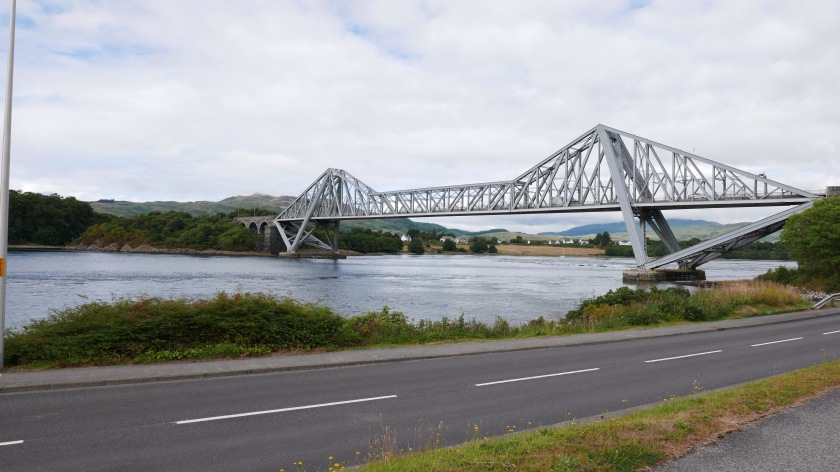 This modern looking and striking bridge was built in the early 1890s by the same engineers who built the Forth Bridge. Still used to day as road bridge. It was in its time an innovative almost revolutionary design. To generate interest along the route they make a thing of the Appin Murder. An actual crime romantized in R L Stevenson’s novel Kiddnapped. It almost the same distance in time now since the building of the bridge as the crime is to the building of the bridge.
This modern looking and striking bridge was built in the early 1890s by the same engineers who built the Forth Bridge. Still used to day as road bridge. It was in its time an innovative almost revolutionary design. To generate interest along the route they make a thing of the Appin Murder. An actual crime romantized in R L Stevenson’s novel Kiddnapped. It almost the same distance in time now since the building of the bridge as the crime is to the building of the bridge.
It was great three days.

